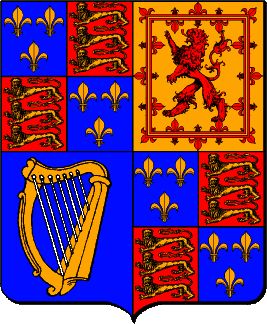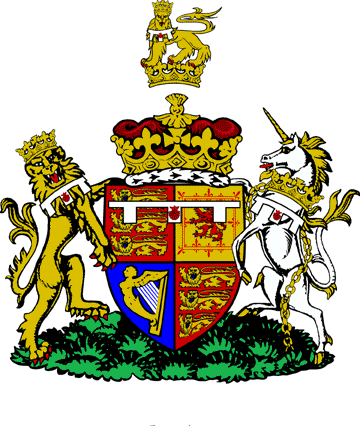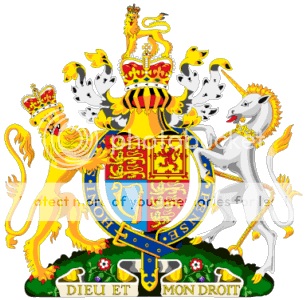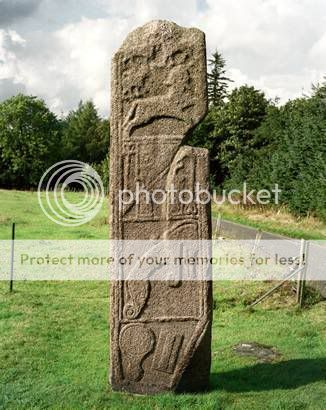It looks like you're using an Ad Blocker.
Please white-list or disable AboveTopSecret.com in your ad-blocking tool.
Thank you.
Some features of ATS will be disabled while you continue to use an ad-blocker.
0
share:
Its a very long story so lets get to know the couple first.
Prince William of Wales
Illegitimate heir
Beatrice Fiori
Illegitimate Jacobite Princess.
freepages.genealogy.rootsweb.com...
pages.prodigy.net...
[edit on 19-10-2007 by Malichai]
[edit on 19-10-2007 by Malichai]
Prince William of Wales
Illegitimate heir
(William Arthur Philip Louis; born 21 June 1982) is the elder son of Charles, Prince of Wales and the late Diana, Princess of Wales. He is second in the line of succession to the British throne and thrones of each of the other Commonwealth Realms. He is also the President of The Football Association. As the son of the Prince of Wales and grandson of Queen Elizabeth II, Prince William is a member of the British Royal Family.
en.wikipedia.org...
Beatrice Fiori
Illegitimate Jacobite Princess.
freepages.genealogy.rootsweb.com...
pages.prodigy.net...
Footnotes to the succession:
1. Serena Brunetti has a daughter by Vieri Fiori: Beatrice Fiori *1979. Serena and Vieri have a civil marriage union; Serena divorced her husband Vanni Pozzolini. Beatrice was born before her parents' civil marriage took place. Even if the marriage union of her parents were considered valid, it is doubtful if this would legitimate Beatrice in respect to the succession to the throne. Past precedent (e.g. the Duke of Lancaster and Katherine Swynford) would suggest that while marriage legitimates all children born to a couple before their marriage, this does not give these children a right to the throne.
www.jacobite.ca...
[edit on 19-10-2007 by Malichai]
[edit on 19-10-2007 by Malichai]
The marriage will be legitimized under RULE OF LAW by the illegitimate Hereditary Great Marischal, THE 14TH EARL OF KINTORE.
James William Falconer Keith
www.clankeithusa.org...
James William Falconer Keith
www.clankeithusa.org...
reply to post by Malichai
Yikes! That means if Beatrice Fiori married William Arthur, the anti-Christ would be Bea Arthur!
I knew there was a reason watching Maude re-runs always creeped me out.
img2.timeinc.net...
Yikes! That means if Beatrice Fiori married William Arthur, the anti-Christ would be Bea Arthur!
I knew there was a reason watching Maude re-runs always creeped me out.
img2.timeinc.net...
They try to tell you in little ways.
www.imdb.com...
Gladiator (2000)
This is the chronicle of Kingship. From his tortured beginings, through strangling his father out of 'ambition' we see the birth of a new King. But its not a 'good' King.
What is the first thing #1 Heir does?
He has the High Marshall Killed, or so he thinks. Then he turns to the new and improved Marshall and asks if he will serve him.
And he does serve him by winning wars, arresting Pesky Senators, terrorizing the people, and seeing over the games that keep the people from revolting.
Then the King imagines himself a diety and takes his dagger in hand to fight the peoples champion, the former Marshall. After evening the odds a little, of course.
Destiny was not what he foresaw. As the battle turned against him he turns to his soldiers and commands them to give him a weapon.
But they stand firm. The King dies. The hero dies.
www.imdb.com...
Gladiator (2000)
This is the chronicle of Kingship. From his tortured beginings, through strangling his father out of 'ambition' we see the birth of a new King. But its not a 'good' King.
What is the first thing #1 Heir does?
He has the High Marshall Killed, or so he thinks. Then he turns to the new and improved Marshall and asks if he will serve him.
And he does serve him by winning wars, arresting Pesky Senators, terrorizing the people, and seeing over the games that keep the people from revolting.
Then the King imagines himself a diety and takes his dagger in hand to fight the peoples champion, the former Marshall. After evening the odds a little, of course.
Destiny was not what he foresaw. As the battle turned against him he turns to his soldiers and commands them to give him a weapon.
But they stand firm. The King dies. The hero dies.
www.grailcode.net...
Eclipse chaser William Arthur is more star-crossed than anyone in the history of numerology and astrology.
And, supposedly the descendant of David, the first king of ISRAEL. And even futher back to Judah, the one promised the land of Israel. The King of the Jews.
www.dccsa.com...
Eclipse chaser William Arthur is more star-crossed than anyone in the history of numerology and astrology.
And, supposedly the descendant of David, the first king of ISRAEL. And even futher back to Judah, the one promised the land of Israel. The King of the Jews.
www.dccsa.com...
WA is the Lion. BF is the Unicorn.

Jacobite Arms

Prince Williams personal coat of Arms
Compare with the Arms of the Monarchy.

Large size:
en.wikipedia.org...:UK_Royal_Coat_of_Arms.svg

Jacobite Arms

Prince Williams personal coat of Arms
Compare with the Arms of the Monarchy.

Large size:
en.wikipedia.org...:UK_Royal_Coat_of_Arms.svg
The crest is a lion statant guardant wearing the imperial crown, itself on another representation of that crown.
The dexter supporter is a likewise crowned lion, symbolizing England; the sinister, a unicorn, symbolising Scotland. According to legend a free unicorn was considered a very dangerous beast; therefore the heraldic unicorn is chained, as were both supporting unicorns in the Royal coat of arms of Scotland.
en.wikipedia.org...
Originally posted by Malichai
Prince William of Wales
Illegitimate heir
I'm having a bit of trouble with this part. How is Prince William an illegitimate heir? Am I missing something obvious?
Isn't it Prince HARRY that is thought to be the son of one of Dianas lovers and not Prince Charles?
Not that it's been proven by DNA testing of course. It's just a rumour that seems to keep circulating...
Not that it's been proven by DNA testing of course. It's just a rumour that seems to keep circulating...
reply to post by Thousand
Legitimate has many possible meanings depending on the subject and the condition in question.
Beatrice Fiori is, by some standards, an illegitimate child. The timing of her physical birth was such that she is not now considered to be legitimate, either as a child or as an heir.
But she can trace her family tree back through all of the Royalty of Europe.
Were her parents union to be ruled as legitimate she would be #1 heir to the Jacobite throne after mom and grandma died. The illegitimate Jacobite Princess.
Prince William Arthur is not an illegitimate child, but he is an illegitimate heir because the throne was taken without legitimacy 300 years ago.
WA and BF are distant cousins. The whole Catholic/Protestant Monarchist/Parliamentrian Jacobite/Stuart thing is mind bogglingly complex if you try to study it from the viewpoint of the different players. Each is so biased that today the TRUTH is hidden right in front of their eyes.
The so-called Pretender was the legitimate King. He was forced into exile while in the monarchy everyone took a step up.
www.jacobite.ca...
WA and BF are both descended from King Charles I. Fiori represents the legitimate male bloodline, although she herself was not born under legitimacy. William represents the Distaff bloodline. What makes him illegitimate is the legal papers.
www.jacobite.ca...
It may take a few weeks to go through them all so we'll just say that there is contention for the crown. From the time of the Pretender until today the two halves of the split monarchy gathered together the rings, the DNA of the Royalty of the world. Look through the geneology of the Jacobites and you will see that they link up with all the Royalty of Europe.
Consider the titles of the Jacobite King.
If either the heir or the spare married this woman [or another jacobite princess] they could make a claim to be King of all Europe.
[edit on 21-10-2007 by Malichai]
Legitimate has many possible meanings depending on the subject and the condition in question.
Beatrice Fiori is, by some standards, an illegitimate child. The timing of her physical birth was such that she is not now considered to be legitimate, either as a child or as an heir.
But she can trace her family tree back through all of the Royalty of Europe.
Were her parents union to be ruled as legitimate she would be #1 heir to the Jacobite throne after mom and grandma died. The illegitimate Jacobite Princess.
Prince William Arthur is not an illegitimate child, but he is an illegitimate heir because the throne was taken without legitimacy 300 years ago.
WA and BF are distant cousins. The whole Catholic/Protestant Monarchist/Parliamentrian Jacobite/Stuart thing is mind bogglingly complex if you try to study it from the viewpoint of the different players. Each is so biased that today the TRUTH is hidden right in front of their eyes.
The so-called Pretender was the legitimate King. He was forced into exile while in the monarchy everyone took a step up.
www.jacobite.ca...
WA and BF are both descended from King Charles I. Fiori represents the legitimate male bloodline, although she herself was not born under legitimacy. William represents the Distaff bloodline. What makes him illegitimate is the legal papers.
www.jacobite.ca...
It may take a few weeks to go through them all so we'll just say that there is contention for the crown. From the time of the Pretender until today the two halves of the split monarchy gathered together the rings, the DNA of the Royalty of the world. Look through the geneology of the Jacobites and you will see that they link up with all the Royalty of Europe.
Consider the titles of the Jacobite King.
Franz Bonaventura Adalbert Maria von Wittelsbach was born July 14, 1933, at Lindwurmstrasse 2a (the hospital of the University of Munich). He is the elder son of Hereditary Prince (later Duke) Albert of Bavaria and of his first wife, Countess Maria Draskovich von Traskotjan. From his birth Francis was recognised by the Jacobites as a "Prince of England, Scotland, France and Ireland, Prince of Cornwall and Rothesay". Owing, however, to the fact that his parents' marriage was, at the time of his birth, not considered dynastic as regards succession to the Bavarian throne, Francis was not a dynastic "Prince of Bavaria", in spite of the fact that he was commonly addressed as such. When on May 18, 1949, Francis' grandfather Rupert recognised as dynastic the marriage between Francis' parents, Francis officially became a "Prince of Bavaria"
.........
Francis is Grand Master of the Order of St. Hubertus, of the Military Order of Maximilian-Joseph, and of the Order of St. George. He is also a Bailiff Grand Cross of Honour and Devotion of the Sovereign Military Order of Malta and (since 1960) a Knight of the (Austrian) Order of the Golden Fleece.
www.jacobite.ca...
If either the heir or the spare married this woman [or another jacobite princess] they could make a claim to be King of all Europe.
[edit on 21-10-2007 by Malichai]


Towards the end of the 15th Century, evidence suggests that there was a secret society operated in the North East of Scotland by the Lairds, led by the Earls of Huntly. This group was very involved in the politics of Scotland having been active in the assassination of the Bonny Earl of Moray in 1592. Later references in Privy Records refer to an organisation called the Band of the Boys led by Gordon of Gight, an ancestor of the notorious Lord Byron. This was an illegal group with its own set of Rules that had been in existence for quite a number of years. Regrettably throughout the generations they had become very much a law unto themselves and had essentially become a band of Upper-class outlaws.
The leader of this group in 1715 was Lord George Keith, Earl Marishal, who formed it into a very active intelligence unit to aid the Stuart cause. He also helped set up other similar organisations in both England and France, being "The Knights of St Thomas Acon" and the "Realm of Sion". He is credited by some with the re-introduction of the Knights Templar into Scotland about this time, and there is sufficient evidence linking some 18th Century Preceptories to this date to tenuously support this assertion. These organisations supplied the necessary intelligence to help plan the abortive 1745 uprising and later convince the Earl Marishal that the Stuarts were a lost cause: He transferred his attentions to Eastern Europe and was very active in the services of Elizabeth of Russia and later Frederic the Great in that Monarch's Prussian campaigns. There is an unsubstantiated story which tells that Frederic, on hearing of the death of Lord Keith, abandoned the battlefield to return to attend his friend's funeral. However, all of the papers relating to his covert Jacobite operations were burnt, as a precaution against his estates being appropriated (again) by the Crown on the basis of the information contained in them.
more....
www.cix.co.uk...
The Highlanders of Kintore and the Kingmaker Plot
There can be only one, is the motto. But first there must be two, and two men on a horse.

the Maiden Stone of Garioch
You can see it here.
www.flashearth.com...
Note that the area to the east is all blocked off. And this is blocked by google earth and all the others besides MS.
Seneschal/Marischal
Under the earlier Capetian sovereigns the seneschal was the second person in the kingdom.
www.1911encyclopedia.org...
The man behind the man who created the King James Bible- George Keith, 5th [4th] Earl Marischal, steward during is childhood, and proxy for his later marriage.
www.thepeerage.com...
While sending the knights out around the world with the English Knights they prepared everyone for the coming king.
In the 17th century the Prieuré Note Dame de Sion was renamed to become the Order of the Realm of Sion, and was affiliated to the Stewart Royal Society - a scientific academy in Britain. The exiled King James VII of Scots (James II of England) succeeded to the Grand Mastership in 1689, at which time the Order became exclusively Jacobite.
The Grand Mastership has been held ever since by King James's heirs, with various Regents deputizing after the Stewarts were exiled in 1688.
www.jornalinfinito.com.br...
We start with the Jaobite King, Grand Master of the Realm of Sion in France,
It is not clear when and where Keith was initiated into Freemasonry. Sources present no veritable information about his Masonic activities before coming to Russia or after his appointment as the Provincial Grand Master during his stay in London from February 1740 till May 1741: on 28 March 1740 James Keith, "Esq; Lieutenant General in the Service of Russia" was present at the meeting "with the Masters and Wardens of fifty-eight lodges in the Devils's Tavern [when] John Keith, Earl of Kintore, was elected the Grand Master."
soc.world-journal.net...
The Grand Master of England, John Keith, Earl of Kintore
there is better agreement that Freemasonry in Russia began with the flamboyant Lord James Keith (1696 - 1758), a descendent from Scottish nobility, banished in 1715 for his support of the Stuart Pretender. He served in the Spanish Army, before moving to Russia in 1728 with the recommendation of Phillip V, and by the early 1740's was a leading Russian (sic) Army General. The Russian Empress Anna appointed him as the military governor of the Ukraine. But, importantly for our story, Keith was made Provincial Grand Master of Russian Freemasonry in 1740 by the Grand Master of England who also happened to be Keith's Cousin. Captain John Phillips had been appointed to this office for Russia in 1731, but there is no evidence to suggest he ever exercised it.
The minutes of the premier Grand Lodge of England for 24 June 1731 record:
"Then the Grand Master and his General Officers signed a Deputation for our Rt. Worshipful Brother John Phillips Esqr. to be Grand Master of free and accepted Masons within the Empires of Russia and Germany and Dominions and Territories thereunto belonging, and his health was drank wishing Prosperity to the Craft in those parts" (Batham, Transactions, p.34).
www.casebook.org...
And Grand Master of both Russia and Germany, James Keith.
His brother George Keith, 10th Earl Marischal, being close advisor to the Frederick the Great, King of Germany, and Diplomat to Paris.
www.electricscotland.com...
www.electricscotland.com...
TWO MEN ON A HORSE
Britain, Germany, Russia, and France, All ruled by the hidden hands of the Jacobite King, then went to war........
[edit on 21-10-2007 by Malichai]
reply to post by Malichai
The Clan Chief, though chief of Keiths, is not the Earl Marischal. That title was given/sold to the Hopetoun Family after the Keiths were stripped of it following the Jacobite uprising...as a direct descendant of the 9th Earl Marischal, I can assure you it is no longer in Keith hands... but very sadly up for sale by the current "owner."
The Clan Chief, though chief of Keiths, is not the Earl Marischal. That title was given/sold to the Hopetoun Family after the Keiths were stripped of it following the Jacobite uprising...as a direct descendant of the 9th Earl Marischal, I can assure you it is no longer in Keith hands... but very sadly up for sale by the current "owner."
new topics
-
President-Elect TRUMP Picks Former Florida A.G. PAM BONDI to be U.S. Attorney General.
2024 Elections: 3 hours ago -
A Mysterious Orb filmed over NYC by local news
Aliens and UFOs: 4 hours ago -
Putin will warn civilians in targeted areas
World War Three: 5 hours ago -
The Popular Vote does not matter
Political Issues: 7 hours ago -
Gaetz withdraws from attorney general consideration
US Political Madness: 10 hours ago -
Bridgewater Triangle
General Chit Chat: 10 hours ago -
Is Russia Using a New Type of Beam Weapon Against Ukraine?
Weaponry: 11 hours ago
top topics
-
Well we know Putins ICBMs won't fail in their silos
World War Three: 15 hours ago, 13 flags -
International Criminal Court Issues Arrest Warrant For Netanyahu
Mainstream News: 13 hours ago, 13 flags -
Gaetz withdraws from attorney general consideration
US Political Madness: 10 hours ago, 12 flags -
Is Russia Using a New Type of Beam Weapon Against Ukraine?
Weaponry: 11 hours ago, 11 flags -
Putin will warn civilians in targeted areas
World War Three: 5 hours ago, 10 flags -
President-Elect TRUMP Picks Former Florida A.G. PAM BONDI to be U.S. Attorney General.
2024 Elections: 3 hours ago, 10 flags -
racist rant, but she made the arguement to get rid of DEI
US Political Madness: 15 hours ago, 10 flags -
The Popular Vote does not matter
Political Issues: 7 hours ago, 8 flags -
Bridgewater Triangle
General Chit Chat: 10 hours ago, 7 flags -
Here is why Western leaders in NATO have zero fear of nuclear warfare. At all. Zero.
World War Three: 13 hours ago, 6 flags
active topics
-
U.S. Closes Kyiv Embassy Over ‘Significant Air Attack’ Intelligence
World War Three • 46 • : KrustyKrab -
Putin will warn civilians in targeted areas
World War Three • 25 • : Xtrozero -
President-Elect TRUMP Picks Former Florida A.G. PAM BONDI to be U.S. Attorney General.
2024 Elections • 24 • : Xtrozero -
DNC Says it's CRAZY to Even Consider Replacing President JOE BIDEN as the Dem Nominee.
2024 Elections • 52 • : WeMustCare -
Encouraging News Media to be MAGA-PAF Should Be a Top Priority for Trump Admin 2025-2029.
Education and Media • 75 • : WeMustCare -
Gaetz withdraws from attorney general consideration
US Political Madness • 24 • : WeMustCare -
The Final Experiment is Scheduled for December 2024. Will it Finally Answer the Question?
Science & Technology • 25 • : Arbitrageur -
Post A Funny (T&C Friendly) Pic Part IV: The LOL awakens!
General Chit Chat • 7809 • : KrustyKrab -
International Criminal Court Issues Arrest Warrant For Netanyahu
Mainstream News • 36 • : Dalamax -
President-elect TRUMP Picks MATT GAETZ for his ATTORNEY GENERAL - High Level PANIC Ensues.
2024 Elections • 122 • : WeMustCare
0
